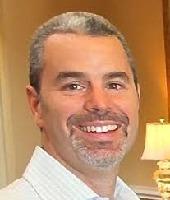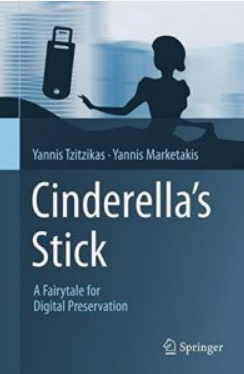Blog
Unless otherwise stated, content is shared under CC-BY-NC Licence
Ironing out the digital: Housekeeping at UAL
Elisabeth Thurlow is Digital Archives & Collections Implementation Manager at the University of the Arts London
Across the six colleges which make up the University of the Arts London (UAL)1 we hold over 120 archives and special collections, many of which contain an increasing amount of digital content – both digitised and born digital materials. These collections chart past and contemporary creative arts practice; the development of art and design education; and the emerging digital arts landscape.
Like others we have been thinking and talking about digital preservation for a number of years. But since January 2018 we have been actively implementing a dedicated digital preservation system, in a collaborative project between our IT Services and collections management staff. A working group of archivists, museum curators, special collections librarians and IT specialists, who together have a shared interest in digital preservation and access.
Levels of Preservation Reboot Overview and Update
Bradley Daigle is Chair of the NDSA Coordinating Committee, NDSA Levels of Preservation Working Group and content and strategic expert for the Academic Preservation Trust
A little background
About the NDSA: The National Digital Stewardship Alliance (NDSA) is a consortium of preservation-minded organizations scattered across the globe. Do not let the “national” part of the title lead you to believe that this is a US-only effort. We have partners of all shapes and sizes—including some in Canada and, of course, our close friends at the DPC! We currently boast over 220 members and are growing all the time. If you would like to learn more - check out our history in more detail.
About the Levels of Preservation: In the heady early days of the NDSA, a group of thoughtful, smart, and forward-thinking individuals crafted a document called the “Levels of Preservation” (LoP) in 2013. These levels are expressed as a tiered set of guidelines on how organizations could begin to build or enhance their digital preservation activities. They function as the key tool to help practitioners of all levels deploy a sustainable digital preservation strategy. Since that time practitioners across the globe have been working with the LoP and some have been extending and adapting them.
Form an orderly queue for a chance to takeover the DPC
You may or may not know, that the DPC’s Executive Board has four Sub-Committees which oversee and shape our work.
Each Sub-Committee is chaired by a Board Director and brings together around 12 people from right across the DPC membership including a diverse mix of people at all points in their careers and across all the sectors and agencies we represent. They meet quarterly for around two hours, normally by video conference; receiving reports about work we have done in specific areas, and reviewing plans for upcoming or new initiatives, as well as asking for new ideas, thoughts, opinions and actions!
Each one is facilitated by a DPC staffer and we aim to refresh the Sub-Committee membership once a year with some new faces.
A blog on good practice and standards
When I took on my new job as Head of Good Practice and Standards at the DPC I was told by several people not to stop blogging.
Luckily, the DPC is an organisation that actively encourages blogging - not just from its staff but also from members.
Note to members - Sarah has a blog schedule and you will be on it somewhere - but don’t feel limited by the schedule - you can blog at any time, it really is a great way to share information and make contact with the wider community.
When working as a digital archivist at the University of York I found that one of the challenges of the role was simply keeping up with new developments and initiatives in this ever evolving field...whilst simultaneously juggling meetings, deadlines, projects and other commitments. I tried my best but had to accept that I was fighting a losing battle - there would never be enough hours in the day.
In my new role at the DPC I feel it is all the more important for me to have my ear to the ground and to have a sense of what is going on out there so this challenge continues. Developments around ‘Standards’ should be relatively well defined and perhaps a bit more quantifiable, but ‘Good Practice’ is a harder one to keep on top of. I will do my best but no doubt will still find that there aren’t enough hours in the day!
The Great iPRES 2019 Digital Preservation Bake-Off is looking for YOUR favorite ingredients and recipes!
Michelle Lindlar is Digital Preservation Team Leader at Technische Informationsbibliothek (TIB) in Germany and part of the workgroup for iPRES 2019.
Ever wonder how workflows are implemented in other repositories? Do you have a suspicion that there might be a perfect tool for your specific type of content and problem out there, but you haven’t found it yet? Or maybe you are just building a workflow and would like to see how different tools fare in a specific task like file format validation? iPRES2019 has the right session for you and needs your input! But, let me back up a bit …
Cinderella's Stick - A Fairy Tale for Digital Preservation
Yannis Tzitzikas is Associate Professor of Information Systems in the Computer Science Department of the University of Crete and Affiliated Researcher in the Information Systems Lab at FORTH-ICS, Greece and Yannis Marketakis works as an R&D Engineer in the Information System Laboratory at FORTH-ICS.
They are authors of Cinderella's Stick: A Fairytale for Digital Preservation
Once upon a time, a life changing opportunity is offered to Daphne (our modern-day Cinderella). An outstanding but lowly undergraduate student at the University of Crete, she applies to become CEO of a worldwide computer company. But time is short, and in her hurry to complete her task, Daphne leaves her USB stick and digital files behind…
Ok, so it might not be the version of Cinderella that you recognize – but it has all the component parts. The unlikely rise from rags to riches, a lost item and a frantic search for its owner, with all of the trials and tribulations one might expect to encounter when accessing content on an old and overworked USB stick (or shoe!)
As well as telling a good old story, we wanted to employ an unconventional approach to describing the main issues generated by the obsolescence of the digital material and its surroundings, whilst laying out methods and actions for digital preservation.
Laurels and how not to rest upon them
Let me offer a belated but sincere ‘Happy New Year’. The Christmas decorations are down but despite our titanic efforts (and burgeoning waistlines) the cupboard is still groaning with leftover cake. As I write, a whole slab of stollen is luring me away from my laptop and back to the kitchen. But I must resist, at least till this week’s story is told.
It’s not so much the story of a week as a whole year: the DPC’s most successful year (so far), 2017-18. That was the pleasing assertion I was able to make at our Annual General Meeting in December, so I thought it would be worth sharing more generally. On a more formal level, some of you will know that a few years ago the DPC set aside its old managerial ‘Key Performance Indicators’ in favour of a ‘Continuous Quality Improvement’ framework. That means it’s not sufficient for the DPC to meet targets, but that we should be striving constantly to improve on delivery. That doesn’t absolve us from the necessary work or reporting our facts and figures: so perhaps unusually this blog will contain some real data.
Putting the pieces together: Transforming Digital Preservation Operations
Faye Lemay is Digital Preservation Manager at Library and Archives Canada
This is part 4 of a 4-part series on Digital Preservation at Library and Archives Canada. Part 1 addressed “Building the Momentum for Change”, Part 2 talked about “Learning from our past”, Part 3 dealt with the “Current state of digital preservation at Library and Archives Canada.”
Given the challenges we faced with obtaining organizational alignment of digital preservation as a core business line, we had to ask ourselves some tough questions about what was not working and why we kept hitting the same brick wall. Experience taught us that technology was not the panacea, but constituted only one of several building blocks.
The key questions we faced:
- How could we get the organization to recognize digital preservation as an operational imperative?
- How could we generate the conditions to foster the development of digital preservation as a core business function?
Digital Preservation in an ever-changing world! A response to the DPC’s Web & Social Media Archiving briefing day
Francielle Carpenedo is a PhD student at the Institute of Modern Languages Research/School of Advanced Study; affiliated with the AHRC’s OWRI ‘Cross-Language Dynamics: Reshaping Community’ project.
I am a PhD student with a thing for communication. One of the things I am often intrigued about is how people communicate in connection to the contextual cues that shape the different ways language is used to get things done in their everyday lives. That goes from sending letters, talking on the phone, sending emails, recording voice messages on WhatsApp to using social media. I often find it fascinating how humans adapt and make use of the different tools available to them to communicate with each other. On that note, it is interesting to think about the transformations that take place within social media communication. As a student of digital communication, social media presents a rich environment to make sense of these processes, and of how different communities are making use of these tools in our society.
Creating an evidence base for Digital Preservation Risk
Sonia Ranade and Alec Mulinder work for the UK National Archives
Thanks to your posts on this blog over the last two years, we have a really good understanding of what digital preservation is: we’re on a mission to send messages to the future. And we want those messages to be faithfully transmitted, to retain their meaning and to be useful for generations to come.
That’s a tall order, but fortunately, the digital preservation community is here to help. Our models give us a common frame of reference. The DPC handbook provides a knowledge base distilled from our collective experience. We have standards and certification schemes to help us benchmark our progress. So, we’re good to go, right?


















































































































































